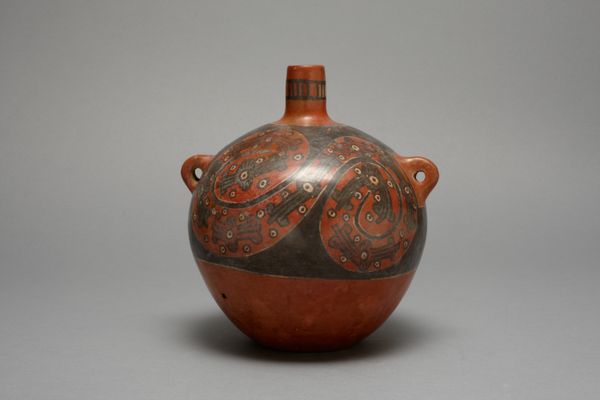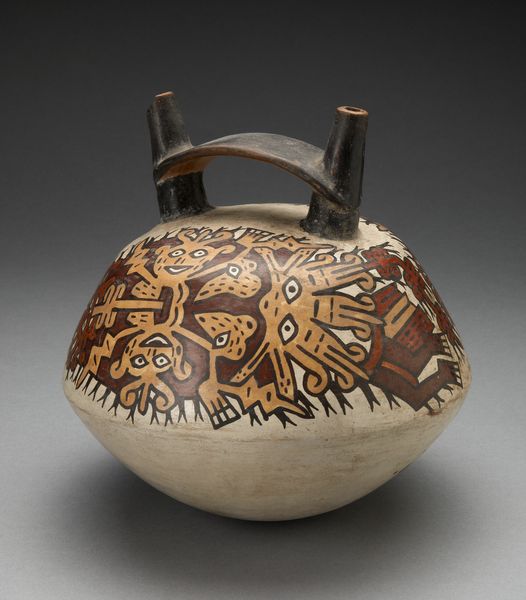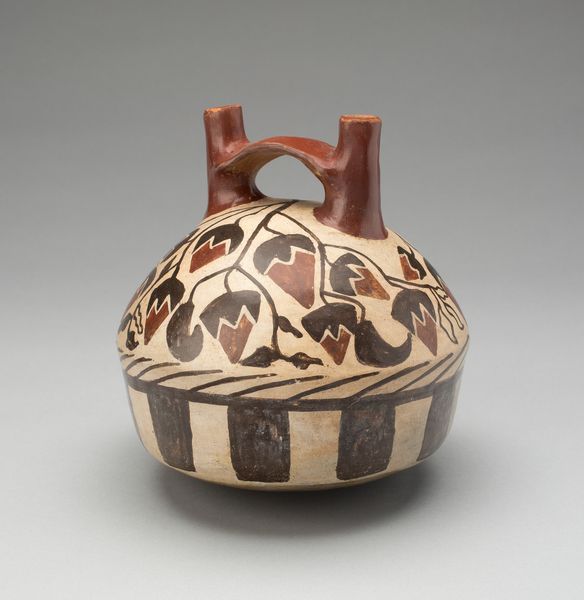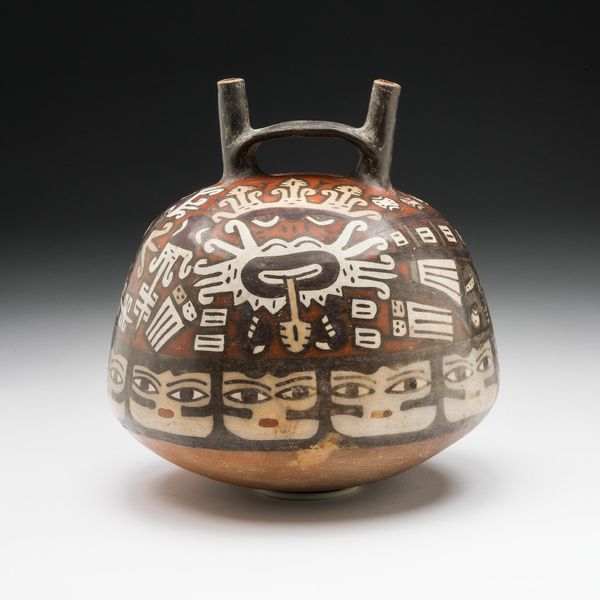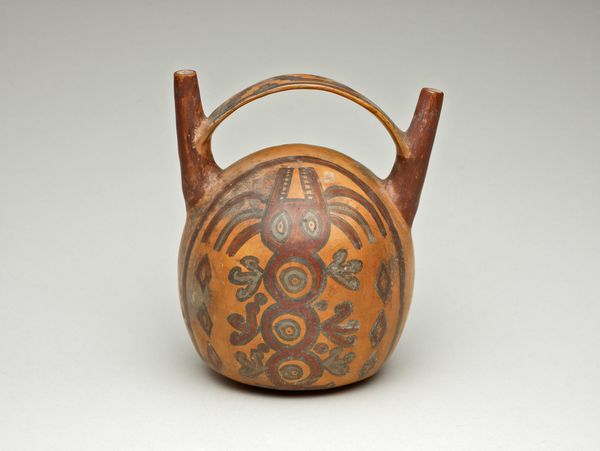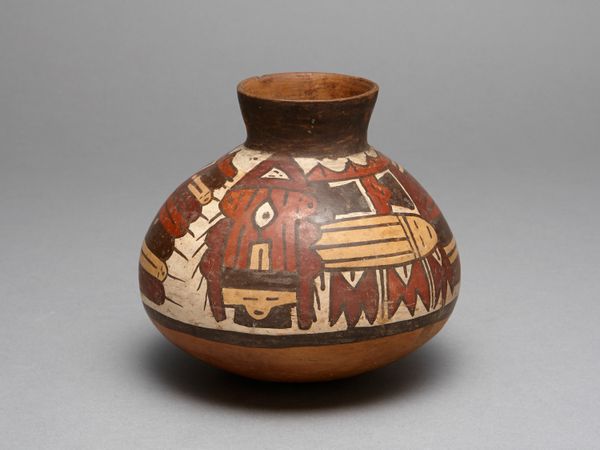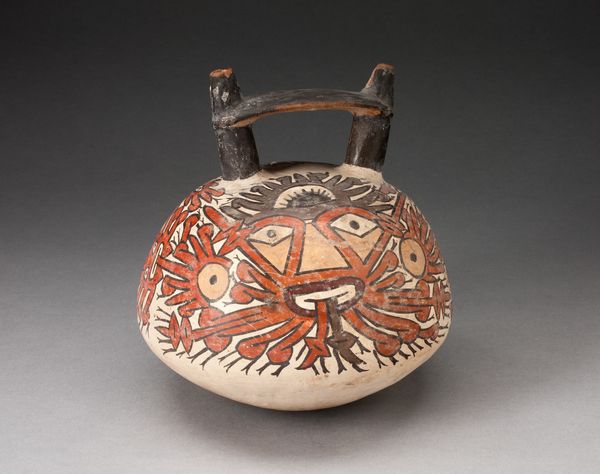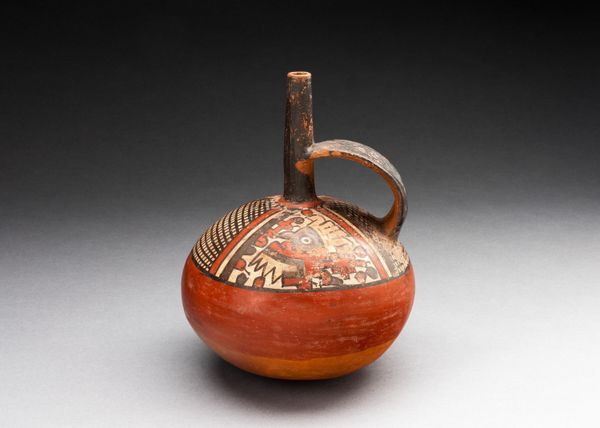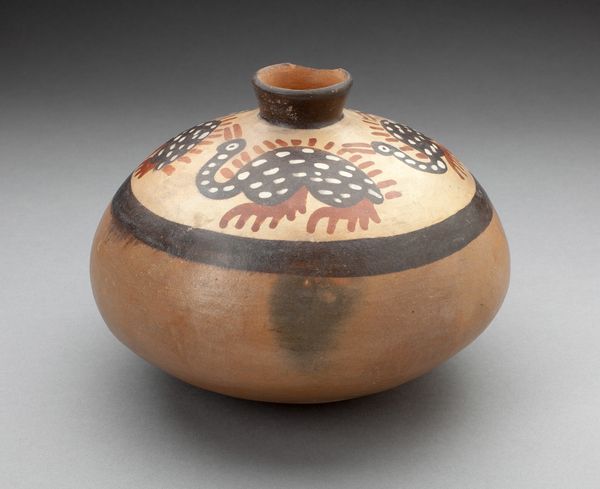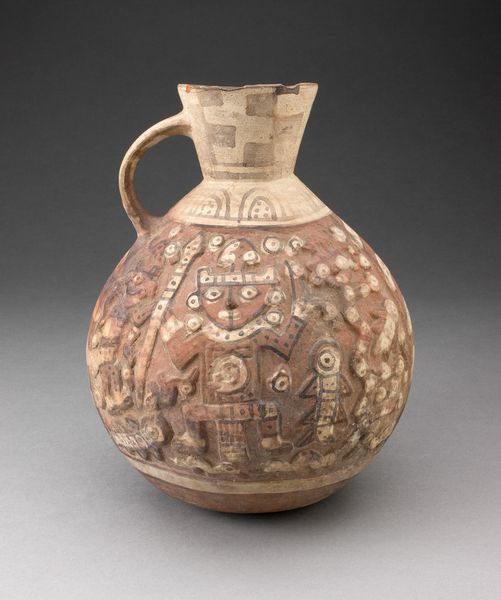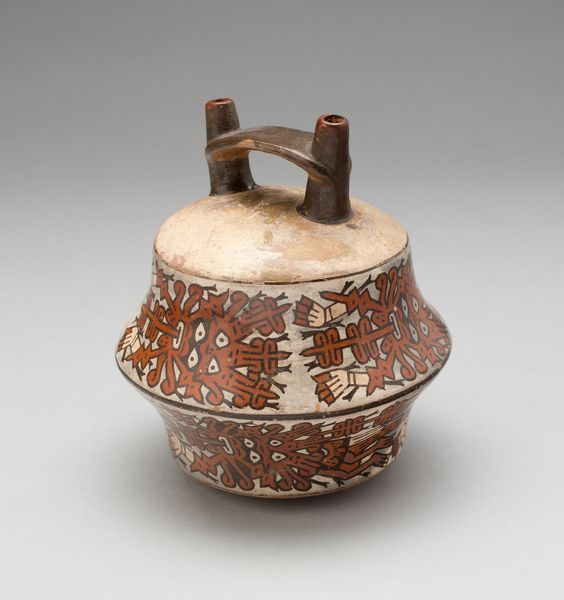
Double Spout Vessel Depicting Costumed Ritual Performer with Intricate Streamers c. 180 - 500
0:00
0:00
ceramic
#
ceramic
#
figuration
#
vessel
#
geometric
#
ceramic
#
indigenous-americas
Dimensions: 18.1 × 17.8 cm (7 1/8 × 7 in.)
Copyright: Public Domain
Curator: Oh, I am absolutely drawn to this ceramic vessel. Something about the boldness of it. Editor: Right? It's so intriguing. This is a "Double Spout Vessel Depicting Costumed Ritual Performer with Intricate Streamers," crafted by the Nazca culture sometime between 180 and 500 CE. What captures you about it? Curator: The swirling energy, the colors. I feel like I’m peering into some otherworldly celebration, a dance lit by firelight. Do you see it, too? The costumed figures seem to be moving, even frozen in time on the surface of the vessel. Editor: Absolutely! The Nazca people were masters of ceramics and vibrant color. Vessels like this one played significant roles in their rituals and social structures. They weren't just decorative; they were active participants in community life. The depiction of the performer with intricate streamers— likely indicates its use in ceremonies, or perhaps held something special during those events. Curator: Streamers and geometric figures abound. So full of life, and yet somehow…contained, purposeful. Were these colours symbolic? Editor: Undeniably. The red and earth tones relate directly to the desert environment they inhabited. The very colors were loaded with symbolic meaning. The geometric shapes may relate to cosmology, concepts of the world around them, while the figure grounds the vessel. Curator: It makes you wonder about the hands that shaped it, doesn't it? What dreams or prayers were whispered as the clay was formed? I wish it could speak! Editor: Yes. We can piece together so much from archaeological context, stylistic analysis, etc, but ultimately, the spirit is elusive. The museum attempts to grant continued visibility to this form of indigenous expression that faced colonial suppression. The art holds a very strong tie to Nazca heritage, for their families. Curator: I love that thought; visibility after facing colonialism, especially when it is rooted in ceremonial rites and performance art. Beautifully put. Thanks for connecting that for us. It definitely sparks a new level of respect for the piece! Editor: Always. Art and context, forever entwined. Thanks.
Comments
No comments
Be the first to comment and join the conversation on the ultimate creative platform.
